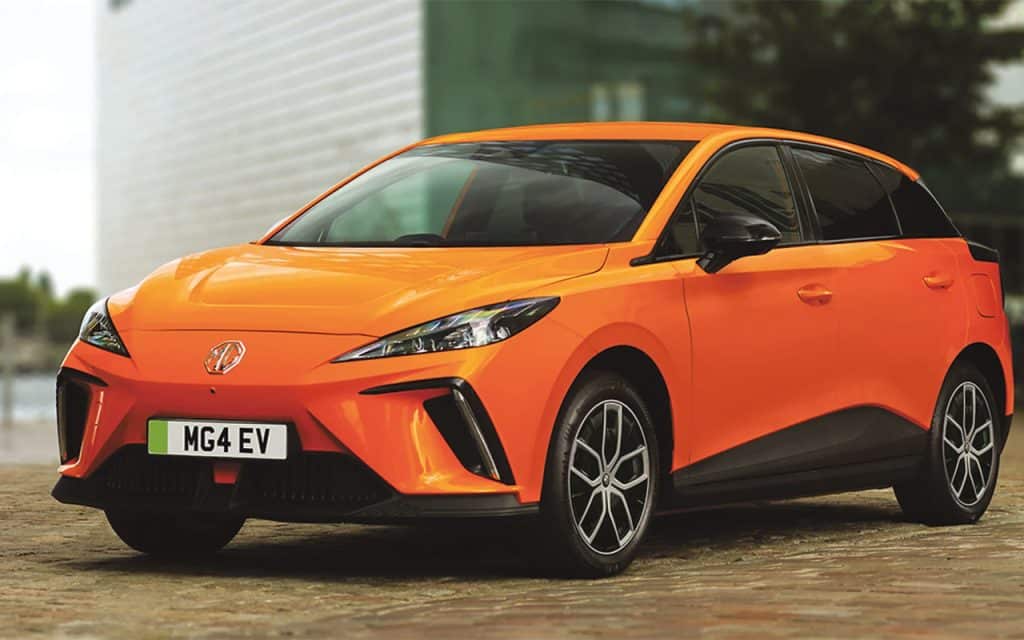
RetroFit
Xavier Dubuisson is an engineer with 25 years experience in the field of sustainable energy in Ireland and internationally. The founder and CEO at RetroKit, a start-up dedicated to upscaling home energy upgrades with innovative digital solutions and one of the partners in the CHERIS project, Xavier has many years of experience helping homeowners make the right decisions when upgrading or building low energy homes.

In this article, I won’t be talking about home energy upgrade solutions. Instead, I would like to relate our family’s experience with switching to an electrical car a year ago. According to statistics published by the SEAI this week, private cars represent 17 per cent of the overall energy consumption in Ireland, and a little less (80pc) than the energy used in homes. So, from a sustainability perspective, it’s a key aspect of the CO2 emissions we’re responsible for since the vast majority of our cars are fuelled with diesel and petrol.
But I won’t bore you with more statistics. I simply would like to share how it’s been for us to go electric, from our personal experience. We decided to invest in an MG4 last July and got it from their dealer in Cork. At the time, we were managing with one old diesel car, which was starting to cost us significantly in repair and maintenance, and given that our son was starting to drive, we decided to take a jump and buy a new car (our first ever). As sustainability consultants, we felt we had to walk the talk and while the cost was higher than an equivalent ‘internal combustion engine’, SEAI’s grants (since then reduced to €3,500) helped sweeten the medicine. Relief of €5,000 on the Vehicle Registration Tax was another incentive. In terms of cost, we also had to factor in the installation of a car charger, which required an upgrade of our main fuse board, a job expertly done by our local electrician Ger. Again, SEAI’s grant (currently at €300) helped. While grants aren’t as good as they were when we availed of them, the cost of EVs has generally decreased quite a bit. With the cost of finance also reduced, EV buyers today are at least not worse off than back then.
Now the benefits! First off, it’s a great to drive, comfortable car, with plenty of space inside the car itself and the boot. It’s a smooth ride but it packs a punch when it comes to acceleration and speed when you need it. As with modern cars, it’s packed with electronics, some more useful than others (the ‘lane assistance’ set on by default drives me mad on the West Cork country roads). With a 60 kWh battery, range anxiety is something we experience rarely but it does require planning for long journeys – we’ve had a few close shaves but so far we’ve never been stranded. The public charging network is improving all the time and the availability of fast charging across the country is becoming pretty good. Just yesterday, we left Dublin with a 90 per cent charge, stopped for a quick bite and a charge at Fermoy’s superfast charger (150 kW), and got back home in Clonakilty with plenty to spare. I’ve done trips for work to Sligo, Mayo and Galway without hassle. Having said that, it’s important to understand that your range will be lower during the winter months and if you drive fast. None of this is a problem for local and regional journeys.
There is also the original motivation of reducing our carbon footprint. Over the last twelve months, we’ve driven close to 25,000 km with the EV. I calculate that we’ve reduced our CO2 emissions by over 70 per cent compared to how much we’d have emitted with our diesel car for the same mileage. That’s almost three tonnes less carbon dioxide. By comparison, an average home emitted 4.6 tonnes of carbon in 2022, so it’s quite significant. That’s considering the average carbon content of the electricity used from the grid in 2023, which continues to decrease as wind and solar electricity generation become more and more important sources of power nationally. You can also opt for the supply of 100 per cent green electricity from several utilities to virtually eliminate your car direct emissions.
Producing your own solar electricity and storing it in your car batteries is also a good option but you’d need a large system to significantly contribute to your car’s electricity requirement, at a significant extra investment. In terms of running cost, the main thing will be your electricity costs. At home, we’ve had a smart meter since the beginning of the year and we were able to avail of a ‘EV special’ tariff with cheap electricity (eight cents per unit) between 2 and 6am. So we plug the car most nights and programme it to make the most of that tariff. In principle, that would mean a potential saving of close to €2,300 this last year compared to buying diesel. However, we need to factor in the cost of using fast chargers during long journeys at a much higher electricity cost (above 60 cents per unit typically). I reckon we spent close to €700 on these last year. There are additional savings including reduced motor tax (€150/year for a full EV) and the maintenance costs should also be cheaper – ours is due its first service now, which will include replacing tyres for the first time.
Overall, I would recommend anyone who is thinking about it to make the jump. It’s a big expense but, as I have illustrated above, there are big savings financially and in terms of your carbon footprint. You can also opt for a secondhand version for a lower investment while still getting plenty of range for your regular trips. It takes some getting used to in terms of planning long journeys and managing your charging, but it’s quite liberating to not depend on fossil fuels to get around.


